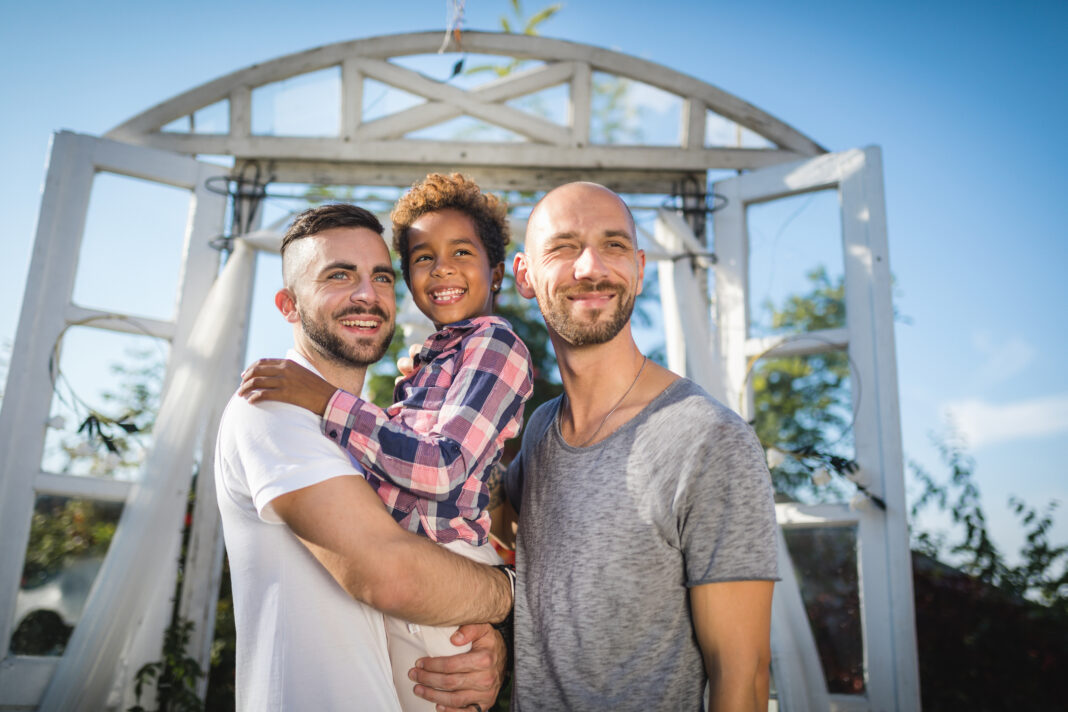Welcoming a child into the family is one of life’s key milestones to be celebrated with family and friends. If you’re thinking of having a humanist naming ceremony, you might like to consider including one of these popular rituals or symbolic actions.
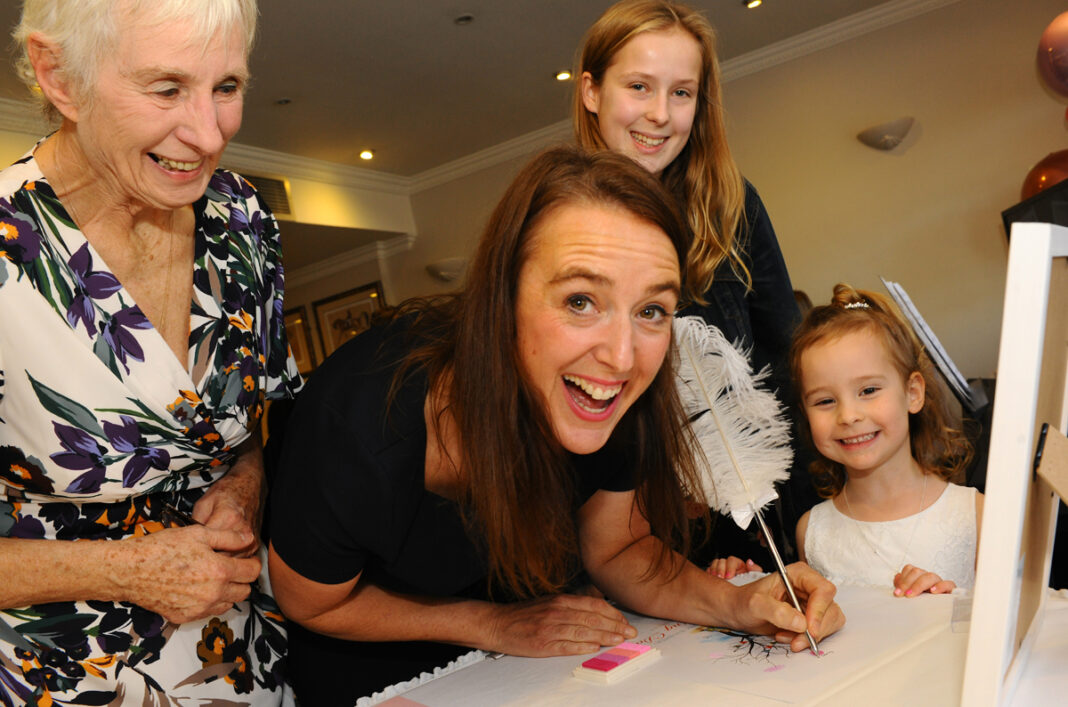
What is a ritual?
A ritual is a series of actions that are performed in a particular order, and they feature in all human societies to mark life’s key milestones such as birth, coming-of-age, marriage, and death. From exchanging wedding rings, to scattering ashes, rituals are part of humanist ceremonies of all kinds.
Rituals typically involve one or more of the following: the reciting of specific phrases, the making of vows or promises, objects, gestures, music, songs, dances, and special food and drink.
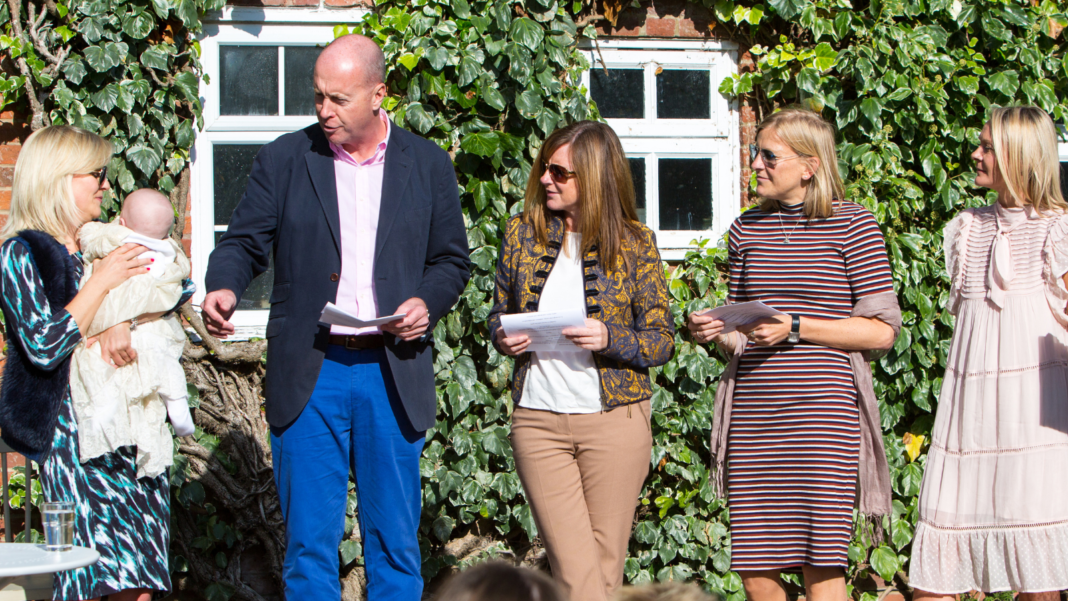
Why are rituals popular in humanist ceremonies?
The content of a humanist naming ceremony is not prescribed: each ceremony is personally created and it can include any words and actions that are of significance to you and your family.
Popular rituals at humanist naming ceremonies
- Signing a naming certificate
- Creating a family tree of fingerprints
- A candle-lighting ceremony
- A sand-blending ceremony
- Creating a tree of promises, advice, or good wishes
- Signing a guest book.
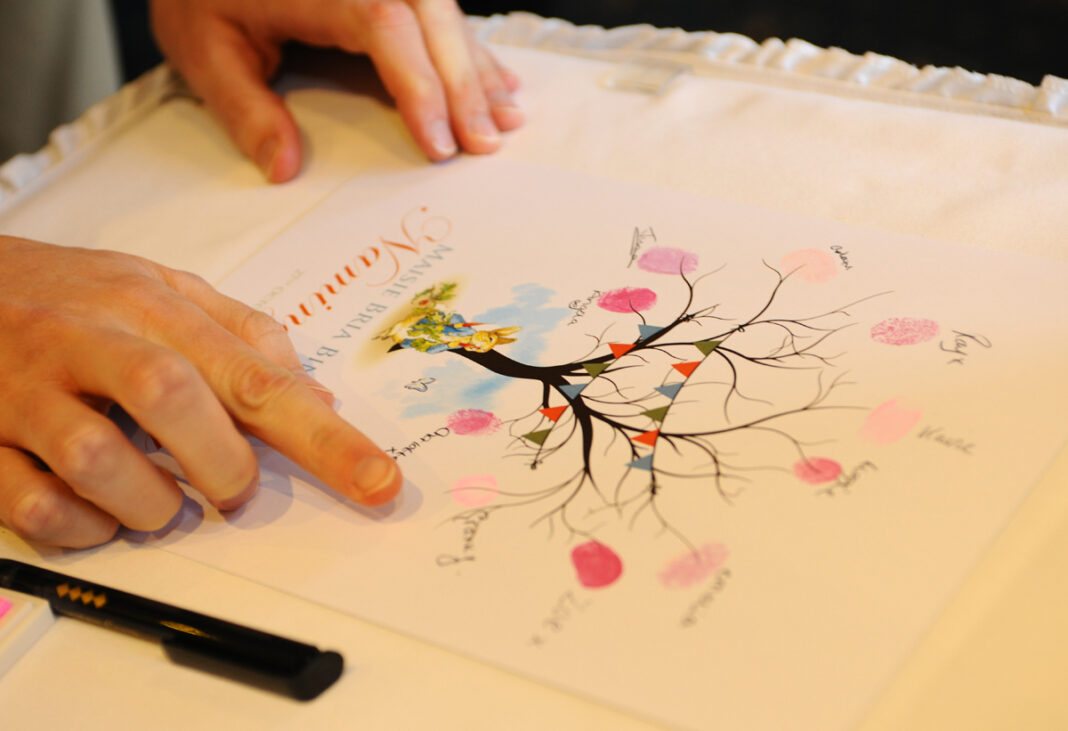
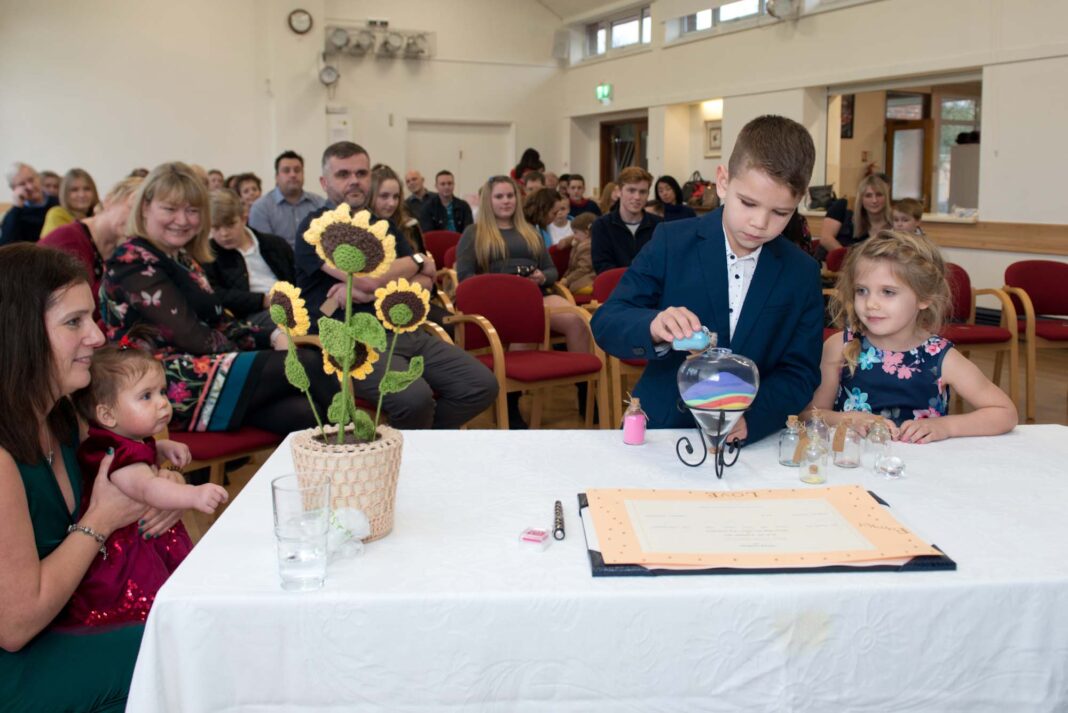
What is a symbolic action?
A symbolic action represents an idea or quality without using words; a symbol of something that, in and of itself, has no real effect, but which has meaning to participants and audience.
Why do we include symbolic actions in humanist ceremonies?
Throughout history, in art and literature, symbolism has been used to represent ideas or certain qualities. For example, a lion symbolises courage, and a butterfly can be used to symbolise a transformation. A wedding ring is a circle with no beginning or end: it’s the perfect symbol of eternity and completeness.
Symbolism is also attributed to colours and flowers – such as ‘red for passion’ and ‘roses for romance’. Each of these symbols gives us a kind of shorthand for feelings, qualities, and attributes.
Different cultural groups may have different associations with the same object. When choosing a symbolic act for your ceremony, it’s important to consider what it means to you and your guests.
These are the most common associations in the western culture, for the following colours:
White most often symbolises perfection, innocence, softness, and cleanliness.
Pink is associated with softness, sweetness, and love.
Blue is the colour of the ocean and the sky; it often symbolises serenity, stability, inspiration, wisdom or health. It can be a calming color, and symbolise reliability.
Yellow is often associated with sunshine or joy. Children tend to like this colour, and it is used to market products to children;
Green is most often used to represent nature, healing, health, youth, or fertility, since it is such a dominant colour in nature. It can be a very relaxing colour.
But, if your child has a favourite colour, that is reason enough to make it the theme of their naming day! Don’t forget, this is about your family and you can make your own symbols and traditions.
Popular symbolic actions for a humanist naming ceremony
- Tree-planting
- Planting seeds
- Gift-giving
Many families include rituals and symbolic actions in a ceremony to give meaning, structure, and inclusivity. For example, inviting all guests to write a promise to your child can be a great way of involving everyone in the ceremony, whilst also getting them to think about the relationship they want to have with your child as they grow. It is both inclusive and meaningful.

When planning a humanist ceremony, the deeper the symbolism, and the more guests that are involved, the more meaning an action will have for you and your family.
Planning a humanist naming ceremony
A humanist naming ceremony provides an opportunity for you to invite family and friends to gather together and welcome your child. Ceremonies are usually attended by the people most likely to be an enduring part of your child’s life as they grow up.
You may decide to invite a few close relatives and/or friends to become guidemothers or guidefathers and to make special promises at the ceremony.
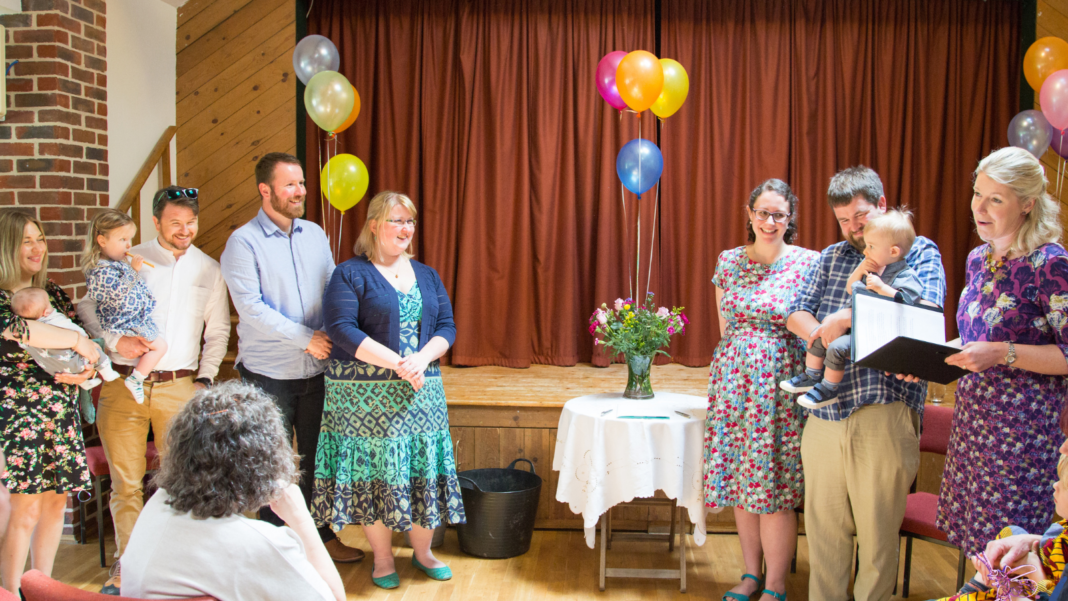
They may choose to give gifts or make promises to your child.
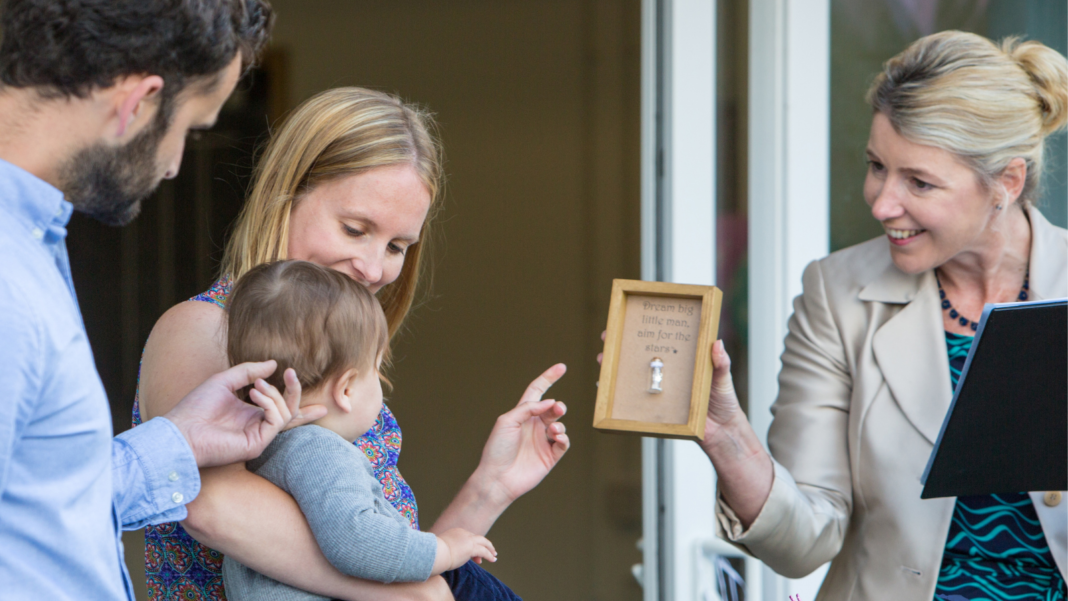
About humanist ceremonies
Humanist naming ceremonies are perfect for families who don’t follow any particular religion. By having a non-religious ceremony, you are emphasising your child’s freedom to decide what they believe as they grow older.
You can find out more about humanism on the Humanists UK website.
At what age does a humanist naming ceremony take place?
Humanist naming ceremonies mostly take place in the first year of a child’s life, with many ceremonies being held on the child’s first birthday. We also conduct naming ceremonies for children of all ages, including ceremonies for welcoming adopted children and stepchildren, coming of age, and change of name.
Naming ceremonies are not only for children. Our celebrants also conduct ceremonies for adults changing their name.
Find your local humanist naming celebrant
The role of the naming celebrant is to help you manage this process, let your creativity flow, and co-create the perfect day to celebrate your child.
The first step is to find your naming celebrant. Your local celebrant will be happy to discuss your unique celebration.




